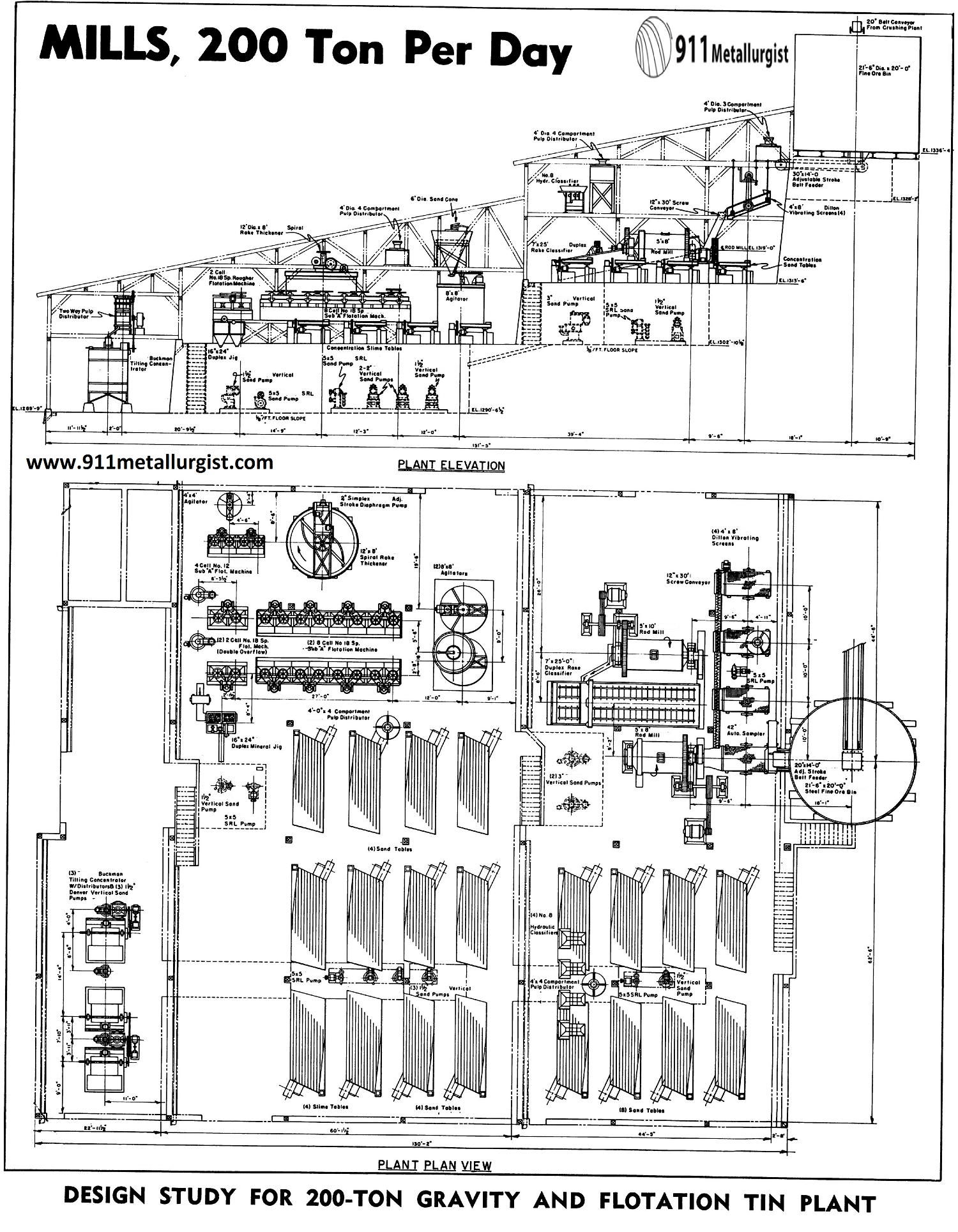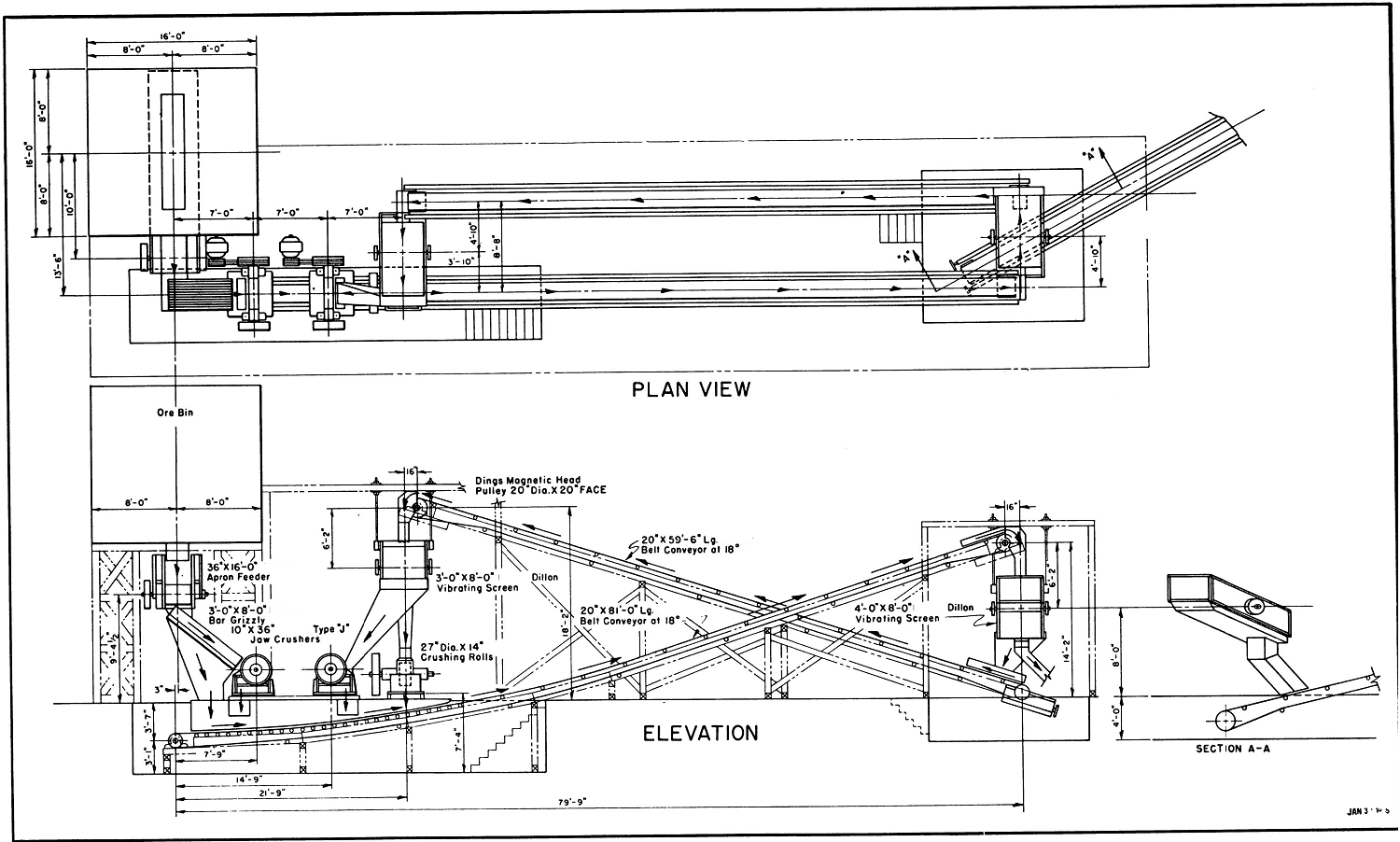

The scarcity of both skilled construction and operating labor in the region, caused the customer to under-score the terms “fool-proof” and “simplicity” in the instructions for the design of this 200 ton tin Beneficiation process plant.
Flowsheet
The tin process flowsheet was developed by laboratory tests which clearly indicated the method of treatment to give high recovery with simplicity of operation. The ore ranged from 1.2 to 1.5% tin (Sn) with arsenopyrite, pyrrhotite and pyrite. The flowsheet included three stage crushing in closed circuit with a Screen ahead of fine ore storage. A Ore Feeder controls the crushed feed to the 5’x 8′ Steel Head Rod Mill which is in closed circuit with four Screens equipped with 30 mesh screen cloth. The —30 mesh screen under-size at 30% solids is conditioned ahead of flotation for removal of sulphides. The flotation tailings are distributed to four four-compartment hydraulic classifiers for classification of table feed.
The table concentrates are pumped to a Spiral Rake Thickener followed by a 4-cell “Sub-A” Flotation Machine for tin flotation, where the remaining sulphides are removed from tin concentrates prior to final dewatering and hand dressing.
The sand table tailings and middlings are thickened before regrinding in a 5′ x 10′ Ball Mill in closed circuit with a Rake Classifier. The classifier overflow is conditioned at 30% solids prior to flotation in “Sub-A” Flotation Machines for removal of sulphides. The flotation tailings are distributed to four concentrating tables. Slime table tailings and table tailings from the regrind circuit are fed to Buckman Tilting Concentrators for further recovery of slime values. Plant results have confirmed laboratory work with a recovery in excess of 70% with a 74% Sn concentrate.
Mill Design and Construction Features
The plant was adapted to the mill site near the mine to allow ore from the mine to be dumped directly in the coarse ore bin without rehandling. The equipment selected was carefully considered for efficiency and dependability, plus simplicity of control, due to remote location. Electrical control panels were centrally located to be accessible only to the skilled operating personnel.
Ore bins made from local timber, bolted steel thickener tanks and water storage tanks were used for ease of construction and due to scarcity of suitable local materials. Building foundations, floors, machinery foundations, and retaining walls were of concrete. Local hardwood lumber was used in the mill building frame-work with galvanized corrugated sheet metal for roof and side enclosures.
The advance planning, including ore tests, equipment selections and attention to small details made it possible to complete this plant with minimum delays and expense.
https://www.911metallurgist.com/cassiterite-flotation-tin-oxide
Source:
This article is a reproduction of an excerpt of “In the Public Domain” documents held in 911Metallurgy Corp’s private library.
